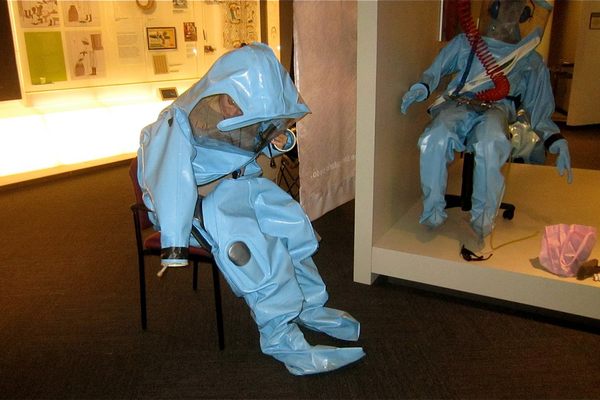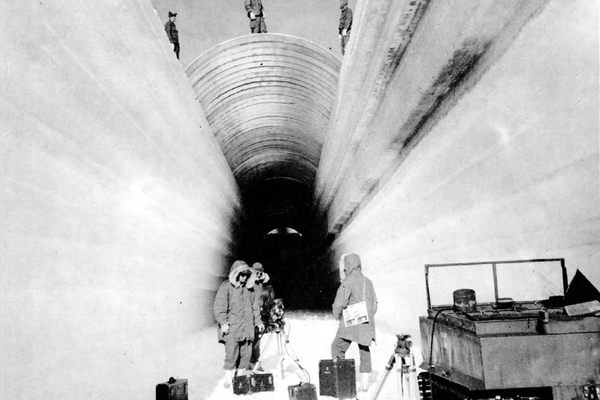‘Leprosy Coins’ and the Legacy of Stigma
In many quarantines, these coins were the only form of money that patients affected by the disease could access.

In the early 1960s, a Nevada physician received a curious gift from one of his patients: a handful of loose coins. But these weren’t just spare change. Robert Myles’s patient was a coin dealer, and among the hodgepodge of old coins he’d given his internist, three stood out as peculiar.
They were coins from the Philippines, but nothing like Myles, a casual coin enthusiast since boyhood, had ever seen before. Unlike the country’s traditional peso, these were marked with a caduceus, the ancient symbol showing two serpents encircling a staff. Made of cheap metal rather than gold, they didn’t seem particularly valuable. And they weren’t; in fact, even when they were in circulation, they weren’t considered legal tender.
Decades before they landed in Myles’s palm, the coins were exclusively used on a secluded island two hundred miles away from Manila: the Culion Leper Colony, which at one point was home to over 5,000 people quarantined to the island. Myles had stumbled upon “leprosy coins.”

In many quarantines, these coins were the only form of money that leprosy patients could access during their indefinite medical exiles. They were created with the intent to keep disease from spreading by restricting patients’ handling of money, which was inaccurately feared as “tainted” by leprosy, from the mainstream circulation. And, with their value rendered null beyond the walls of their respective compounds, these currencies also made it nearly impossible for desperate patients to escape. You might be able to slip past the sentries keeping watch or wriggle through the fencing of your settlement’s enclosure, but you can’t get too far with the equivalent of Monopoly money in your pocket.

Not every leprosy quarantine settlement, or leprosarium, had its own money. But a handful, from Brazil to Japan, issued alternative currencies through the early- to mid-20th century as one of an arsenal of measures to further isolate their patients from society and soothe the fears of their surrounding communities.
Some currencies were privately minted by the leprosariums themselves, according to Jean Myles, Bob’s wife, while others were issued by the country’s health ministry. Some, like the money used at the Palo Seco quarantine in the Panama Canal Zone, were made right here in the United States, at the Philadelphia Mint. Some are stout, copper coins that were later tossed overboard into the ocean, Jean says. Others, like the gorgeous paper notes from Malaysia’s Sungei Buloh settlement, were painstakingly illustrated and later burned en masse. As for the ones that survive? They remain a tangible example of one of the most enduring medical stigmas in human history.
That happenstance encounter with a few loose Culion coins sparked a lifelong interest for the Myleses, who together spent years accumulating a stunning and encyclopedic collection of leprosy currency from across the globe. “Bob got interested, and he started looking around, and found several dealers that had them,” Jean says, adding that Bob had also seen and treated a patient with leprosy (now referred to as Hansen’s disease) in Reno. She recalls one of Bob’s regular coin dealers saying that whenever he’d get a new leprosy coin, he’d wash it in alcohol, then wash his hands with soap, and then immediately give Bob a call.

Bob passed away in 2014, but five years prior, the Myles family donated their extensive collection of leprosy currency to the National Hansen’s Disease Museum, located at the former leprosy hospital and settlement in Carville, Louisiana. There, gleaming from beneath plastic protectors, are dozens of coins from leprosariums around the world: Brazil’s Colonia Santa Teresa, Panama’s Palo Seco, and, of course, Culion in the Philippines.
The collection, donated to the museum by the Myleses and fellow coin collector James Archibald, is displayed alongside other relics of the disease—rudimentary medical instruments and ointments, antique wicker coffins, and handmade Mardi Gras floats crafted to fit over wheelchairs. With 123 coins and 14 paper bills on display, the collection represents currencies from five countries: the Philippines, Venezuela, Colombia, Panama, and Brazil.
These currencies created an insular closed loop of commerce in their respective settlements, where patients often held jobs from gardening to cooking to clerical work. Their earned wages were issued in settlement currency, and any money they sent out of the settlement to patients’ families back home would be swapped out for legal tender. According to Elizabeth Schexnyder, the museum’s curator, new patients arriving on-site would hand over any outside currency and exchange it for the special-purpose bills and coins.
Patients had little say in the matter, Schexnyder says. “That’s the way they did business with the outside, and that way, they’d guarantee that the ‘tainted’ money would never leave the grounds,” she explains. With this disease, she adds, even something as valuable and essential to one’s worth as currency became suspect. (Carville itself did not mint its own currency, says Schexnyder; instead, all outgoing money was sanitized by chemical fumigation, and patients were forbidden from transacting with the Mississippi River peddlers who frequently sidled up to the settlement’s fence.)

The fear that fueled the creation of these currencies also mirrored a larger anxiety at the time, according to Douglas Mudd, director and curator of the American Numismatic Association’s Money Museum in Colorado Springs, Colorado. “Most colony currency was issued in the 1900s, and that coincided with a period when there was a general scare, worldwide, with the idea that germs could be transmitted by touching things,” Mudd explains. “Through the 1920s, there was a bit of a paranoia about it, associated with money.” That undercurrent of paranoia was only further compounded by a deep, millennia-old fear of a disease many people perceive as a Biblical curse.
Indeed, some nasty stuff has been found hitchhiking on paper bills and coins, but Mycobacterium leprae, the bacterium that causes leprosy, is not among them, nor is it nearly as contagious as the world once thought. Even in more than a century of Carville’s history, no staff member ever contracted the disease from a patient. In 1970, a Malaysian journalist named Isaac Teoh reported in Carville’s patient-run, internationally distributed newspaper, The STAR, that Dr. Gordon Alexander Ryrie, medical superintendent of Malaysia’s Sungei Buloh settlement, had sent “soiled” paper money from the settlement to the Institute for Medical Research in Kuala Lumpur. “There, the notes were subjected to extensive microscopic tests to find if any live leprosy bacillus was still wriggling about,” he writes. “None was found.”
Yet, fear and myth prevailed over research and science, and patients suffered their undue exiles anyway. “It’s a real, physical example of how the person who was diagnosed with leprosy became the disease,” says Schexnyder. “It wasn’t something you had, it was you. You were marked, anything you came into contact with was marked, your clothing, money, even something as valuable as currency was marked.”

Today, the coins are a lasting symbol of how fear and misunderstanding stripped away the humanity and agency of people affected by the disease. The coins are also a hobby among a small but fervent group of numismatists, who pursue coins from certain settlements with the same zeal that other coin collectors might apply toward tracking down an 1804 silver dollar, one of the rarest and most valuable coins in American minting history.
That pursuit is not always easy, especially when much of the currency was destroyed in the mid-20th century after medical breakthroughs rendered some of these measures indefensible, Schexnyder explains. “[Colonies] decided they were not going to distribute this money anymore around the 1950s, which happily corresponds to a time when they could actually treat the disease,” she says, referencing the advent of the early oral sulfone therapies that quickly replaced topical chaulmoogra oil as an effective treatment for leprosy.
Some coins, such as centavos from Colombia’s Lazareto, are relatively common; others, like the mimeographed and hand-signed paper scrip from Culion or the elusive plastic tokens issued at some Chinese settlements, represent years of dogged pursuit. “Most of the currency was destroyed,” says Jean Myles, adding that paper scrip was burnt and coins were either melted down or thrown into the sea. “So if they come on the market, the people who do collect them really grab them up.”
While a small group of dedicated collectors, like the Myleses, seek out these coins, Mudd says they’re often seen more as curiosity cabinet fodder than a valuable collector’s item. “It’s not well-known that they exist, and part of what creates value in coinage is how well they’re known,” he says. Even the raw materials are cheap—Mudd says that leprosy coins were often made from common “base metals” like nickel or aluminum, never gold.
“In numismatic circles, we speak of collector value,” Mudd says. “With these, the intrinsic value is low… there is some collector value to them, but it depends really on how well-known they are more so than their actual rarity.” Numismatically, the currencies are categorized under the “tokens and medals” umbrella: Even to this day, we still don’t see them as “real money.” I mention this to Schexnyder, and she sighs. “It’s always a disease apart.”

Despite all of the research and medical knowledge on the disease, public understanding of leprosy is still, by and large, stuck in the 19th century. People still assume the disease is highly contagious. It isn’t. People still think it causes one’s limbs to “fall off.” It doesn’t. People think that leprosy has been eradicated from the Western world, but the United States still reports a few hundred new cases a year, though nowadays, people with Hansen’s disease seek treatment at outpatient clinics rather than being forcibly removed from society. And even among the collecting community, some people still treat the currency with an unnecessary level of precaution—like the Myleses’ dealer, or another dealer Jean once saw at a coin show who refused to handle his leprosy coins outside of their protective plastic cases.
In 1964, a Chicago numismatist named Sue Brady wrote to The STAR’s editorial staff, asking for information on leprosy coins. Her letter, printed in their January/February edition, reveals a sentiment that remains largely unchanged today, more than half a century later. “I will be frank with you, I thought the disease no longer existed, only in some remote corners of the world, and was something to be shunned,” Brady writes. “How wrong the layman is when he doesn’t get the facts.”











Follow us on Twitter to get the latest on the world's hidden wonders.
Like us on Facebook to get the latest on the world's hidden wonders.
Follow us on Twitter Like us on Facebook